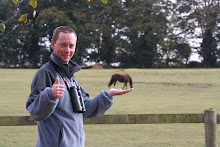We wanted to check that it was still present so that further work on its distribution on the reserve could be planned into the next 5yr management plan

The bee is found nesting in holes along the sand dunes and in the old clay seawalls. The bees are very hardy and can even survive in the nests if they are covered by high tides!! The areas where we have found the bees have had suitable nesting areas near large stands of sea aster.



We searched two areas last and were pleased to find adults foraging in both areas. The bees are pretty small and fast so catching them proved a little tricky. Once you get your eye in they are pretty straightforward to identify. Although all the Colletes are similar, the habitat and flight period help separate them from the rest of the family. Their long, thick black antenna and long thin eyes are good features to look for. You have to agree that its a cute looking bee!


We were expecting to find them on the saltmarsh so it came as a bit of a surprise when we found one feeding on a sow thistle on the Autumn Trail. We were actually looking at another species when Rosie went ‘there’s one!’ It showed pretty well and didn’t mind being photographed!



The bee is found nesting in holes along the sand dunes and in the old clay seawalls. The bees are very hardy and can even survive in the nests if they are covered by high tides!! The areas where we have found the bees have had suitable nesting areas near large stands of sea aster.



We searched two areas last and were pleased to find adults foraging in both areas. The bees are pretty small and fast so catching them proved a little tricky. Once you get your eye in they are pretty straightforward to identify. Although all the Colletes are similar, the habitat and flight period help separate them from the rest of the family. Their long, thick black antenna and long thin eyes are good features to look for. You have to agree that its a cute looking bee!


We were expecting to find them on the saltmarsh so it came as a bit of a surprise when we found one feeding on a sow thistle on the Autumn Trail. We were actually looking at another species when Rosie went ‘there’s one!’ It showed pretty well and didn’t mind being photographed!


We had a look for Colletes in the dunes on the way but no sign. There were some interesting species including loads of spider-eating wasps. It was fascinating watching them hunting through the marram grass and were even seen to catch a spider.

Now all I need to do is find another excuse to get out of the office...

Now all I need to do is find another excuse to get out of the office...























